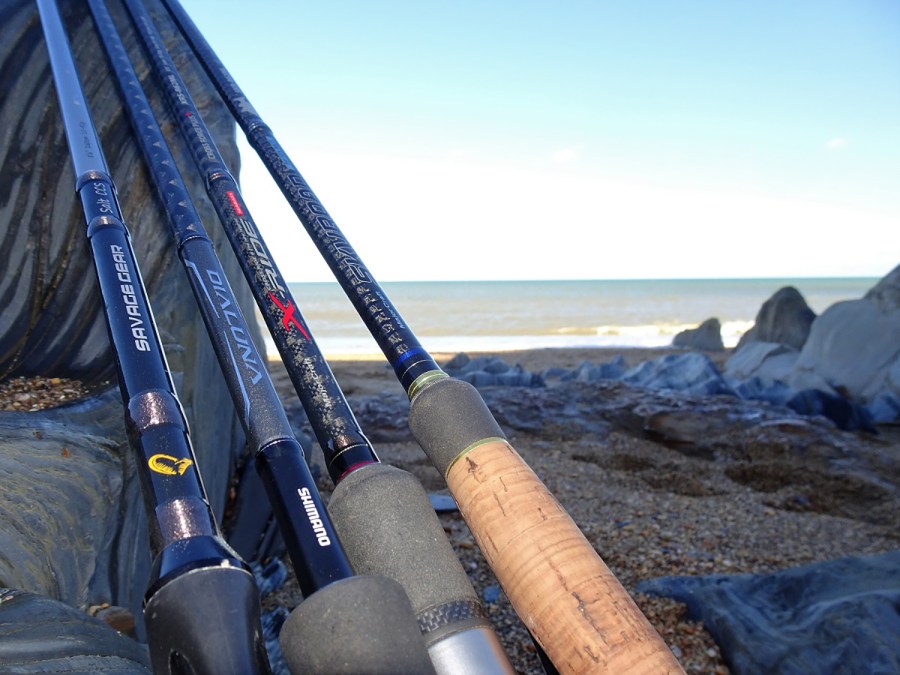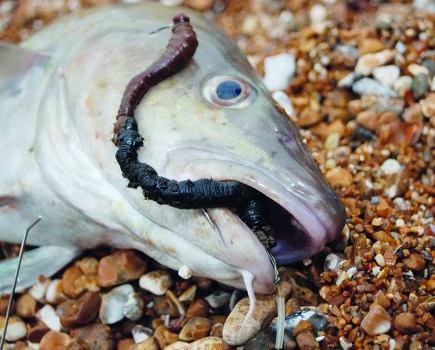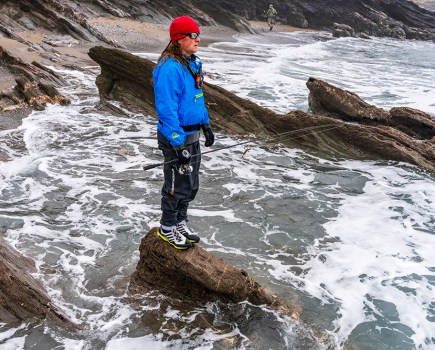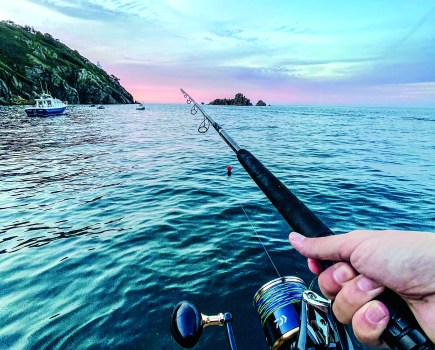From design to casting weight, South Devon bass guide Marc Cowling gives his top tips on selecting the best lure rod for bass fishing
As a full-time, professional bass guide, I am fortunate to be in a position where I can borrow one of my client’s rods for a play during or after most sessions. As a result, I have used the shortest, longest, flimsiest, cheapest, nastiest and probably least suitable choices, including those awkward and nearly obsolete ‘spinning rods’, through to the most expensive, exclusive and seemingly best bass lure rods out there.
If you’re new to this type of fishing or looking to upgrade, where you should you start? It’s a divisive subject, hence why I won’t be listing specific rods. There are two schools of thought when choosing – firstly the type of ground and secondly the attributes of a particular bass lure rod.
The first point is simple enough. If the topography of your coastline involves using potentially heavy metal lures (25-35g+) from shallow sandy beaches or larger, denser surface and sub-surface lures, either from rocky outcrops or steeply shelving beaches into primarily deep water, then a longer (certainly 9ft+) and more powerful rod is required. But, if you envisage chasing bass at remote coves and inlets, over expanses of reef covered by shallow water (less than 15ft) or within the confines of tidal lagoons and estuaries, then consider a rod shorter than 9ft.
DESIGN
The second aspect is fundamental to your chances of achieving consistent success. Many occasional anglers catch their first bass on a metal ‘spinner’ lobbed out and simply retrieved, but to catch decent-sized bass on a recurring basis, the ability to work the lure in the manner that it was designed for is crucial.
The concept of lure fishing is to imitate a swimming, crawling, dying, struggling or overwhelmed creature or prey item by making a piece of wood or plastic look like the real thing so that a predator will try to eat it. To achieve this, look for a designated lure rod with attributes such as crispness, feel, precision, lightness in your hand and manoeuvrability. These must sit alongside enough power to bully a fish if required, without the rod feeling unwieldy or cumbersome.
The fundamental attributes to consider when searching for a bass lure rod are balance, casting weight range, action and sensitivity. I’ll deal with each of these in turn.
BALANCE
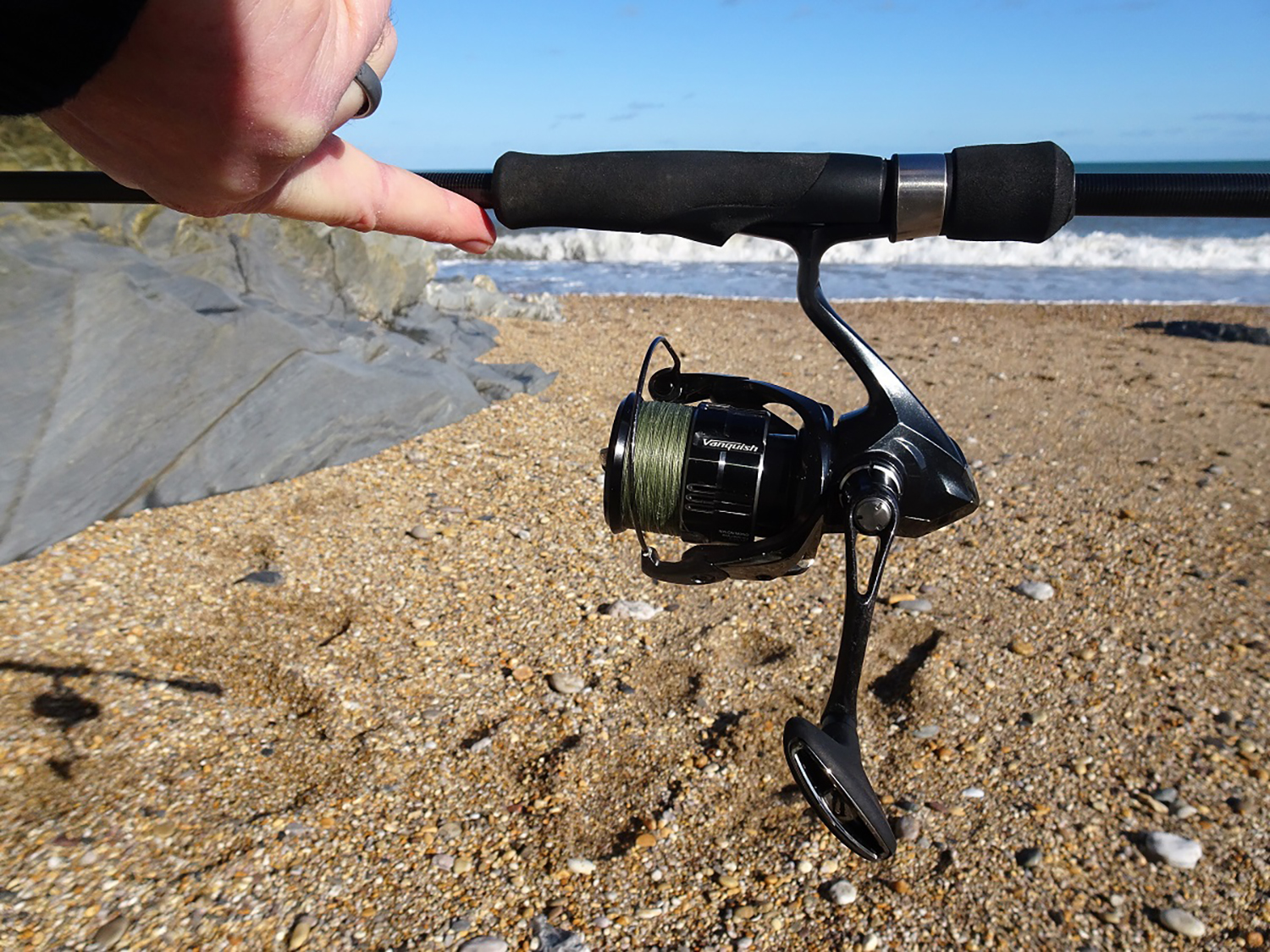
Ideal balance point on a bass lure rod
The balance of a lure rod (without a reel attached initially) is more significant than how much it weighs, although one in the 120-140g bracket would be in the right ball park. Assessing how this may translate to fishing with it is easy enough. First, balance the rod with your chosen reel attached on your middle finger. The further up the blank towards the tip you need to place your finger, the more tip heavy it is – and the more tip heavy, the more tiresome it will feel when working your lures. I consider the ideal balance point would see the rod (with reel attached) balancing very close to where the rod grip meets the blank.
Something I get asked a lot is whether a heavier reel can make a rod feel more balanced. My opinion is that a weight (for example a £1 coin at 9g or a £2 coin at 12g) taped to the very end of the rod butt (especially when it weighs around 130g and the reel around 180-230g) makes more difference (for the better if a rod is tip heavy) than attaching a reel that is 50g or even 100g heavier for that matter.
CASTING WEIGHT
First consider the weight of the individual lures you’ll routinely use. The correct rod for you will compress enough to propel lighter lures seaward, yet have the capability to comfortably launch heavier lures into a stiff breeze without placing too much stress on the blank.
As an example, a rod rated at 10-30g, casting a lure between 19-21g would generate the most opportune levels of compression and therefore ease of use.
ACTION
A rod’s action is determined by the material with which it is made (graphite, carbon fibre), the thickness of the walls of the blank, where it flexes (compresses) and how quickly the rod straightens again (recovers). To keep things relatively simple, I’ve broken down a rod’s action into three categories: soft/slow, medium/moderate, fast or very fast.

There are different lure rod actions – soft, medium or fast
* Soft/slow: The rod bends further down the blank (towards the reel). Advantages are that you’re less likely to tear the hooks from a fish’s mouth and the rod will compress easily (ideal for soft plastics and lighter lures). The main disadvantage is that lure vibration, bites and that all-important feel will be slightly lacking, and any movement created by the angler (twitches etc) will take a split second longer to transmit through the rod to your lure.
* Medium/moderate: This type bends in the top half towards the tip and is stiffer towards the butt. Positives are more power, casting accuracy and increased sensitivity with small, medium and relatively large (70-140mm) lures of light to moderate weights (10-25g). A negative is the increased risk to tearing a hook-hold.
* Fast or very fast: The rod flexes in the final quarter towards the tip. This type is very sensitive and able to cast and work a varied range of lures, sizes and weights. Sometimes a fast rod can feel a little too poker-like and the main disadvantage is the increased probability of the hooks pulling from a fish’s mouth. Considering a decent sized bass can make powerful runs often parallel to your stance, means the probability of a lost fish is increased.
SENSITIVITY
For all the waggling of a fishing rod on your visit to the local tackle shop, it is the way it feels when you are out fishing that is important. The overall sensation when you are not only retrieving, but also, crucially, actually working that lure is paramount. It’s a sensation that is enhanced when a rod with the reel attached balances very close to where the blank converges with the rod grip.
To get the best out of the set-up and to increase your chances of catching, you want to know what is going on at the business end. Visualising the lure’s action in the current or backwash, with every flick of the wrist, jerk or quicker turn of the reel’s handle instantaneously connecting you to that fake fish simply epitomises lure fishing.
ALL-ROUNDER
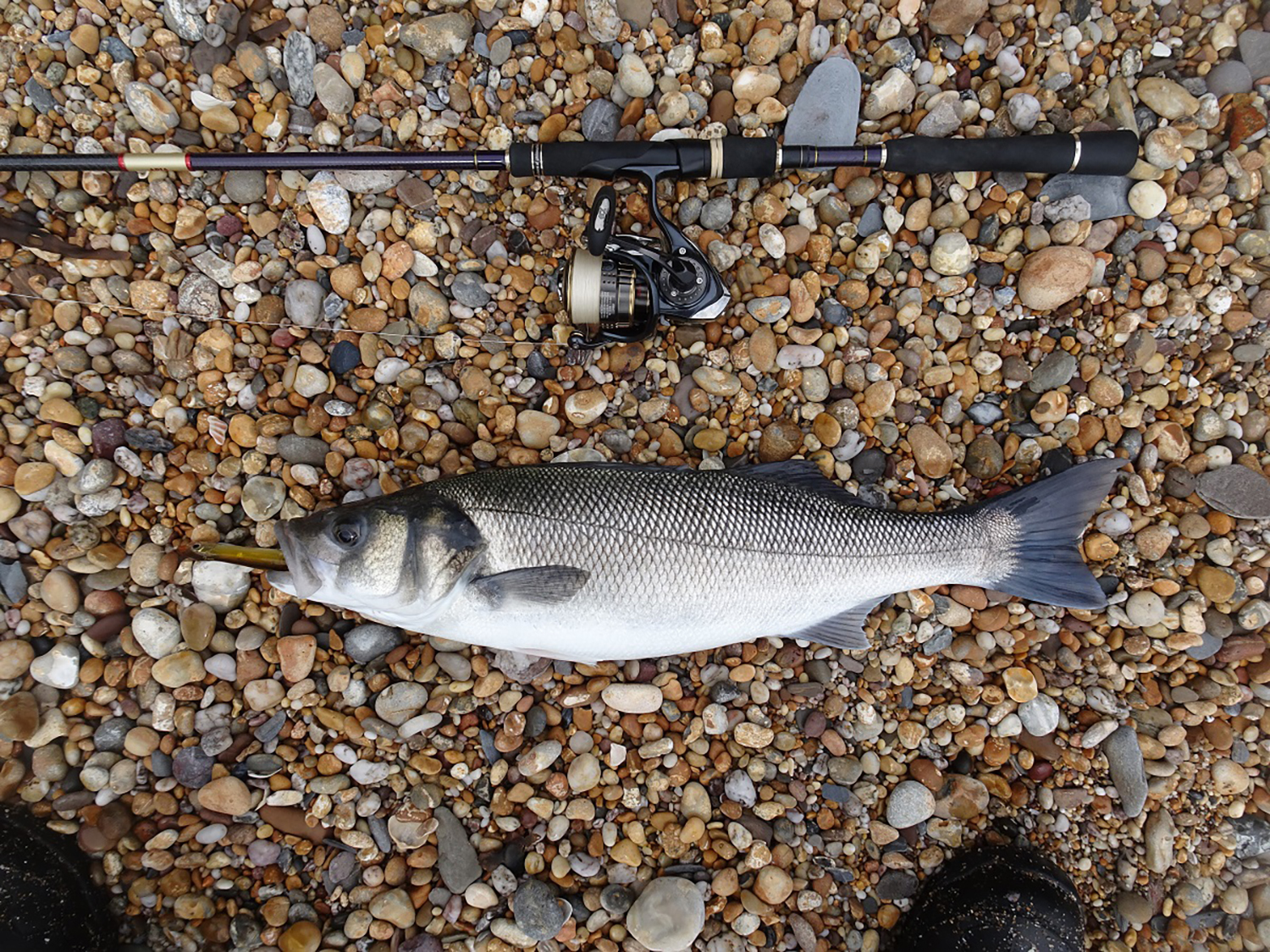
Lure rod made by Apia
If owning a couple (or more) bass lure rods to suit all occasions isn’t your thing, and you’re looking for that one all-rounder, then go for an 8ft 6in to 9ft version. It should be feather-light (under 140g), balance beautifully and be extremely light in the tip, alongside being able to effortlessly launch and work substantial lures (like the 26g, 140mm Xorus Patchinko II) at range. Further, it should be capable of whisking 8-14g weedless soft plastics deftly into the margins or tide runs, as well as smashing 15-24g hard-diving minnows out into a raging gale. All this while allowing you to feel everything and transmit, directly and simultaneously, your every rod and reel movement. These rods are out there, trust me.
For more tackle tips, head to our Fishing Tackle section, or subscribe to Sea Angler for the latest reviews

